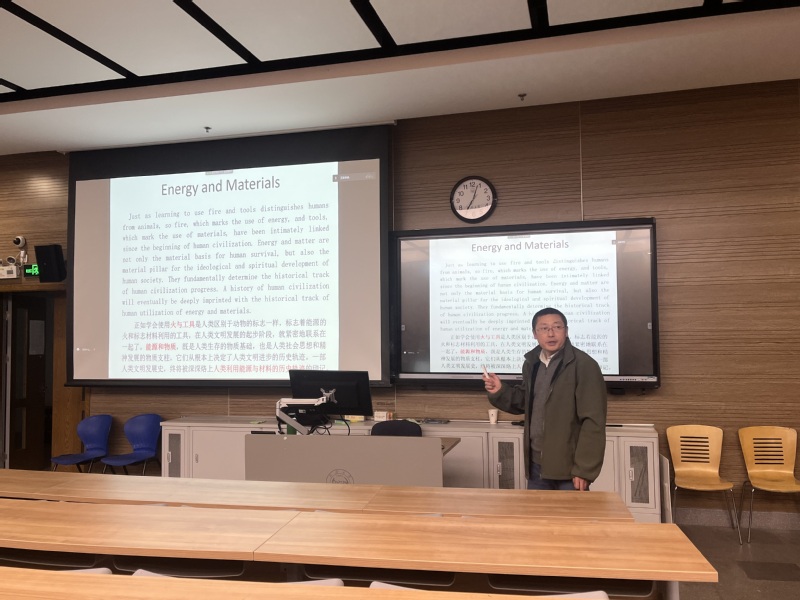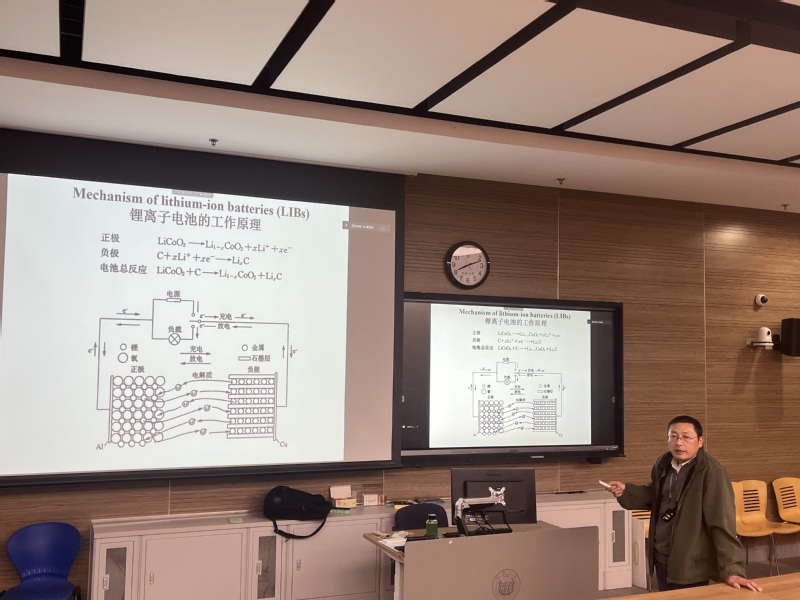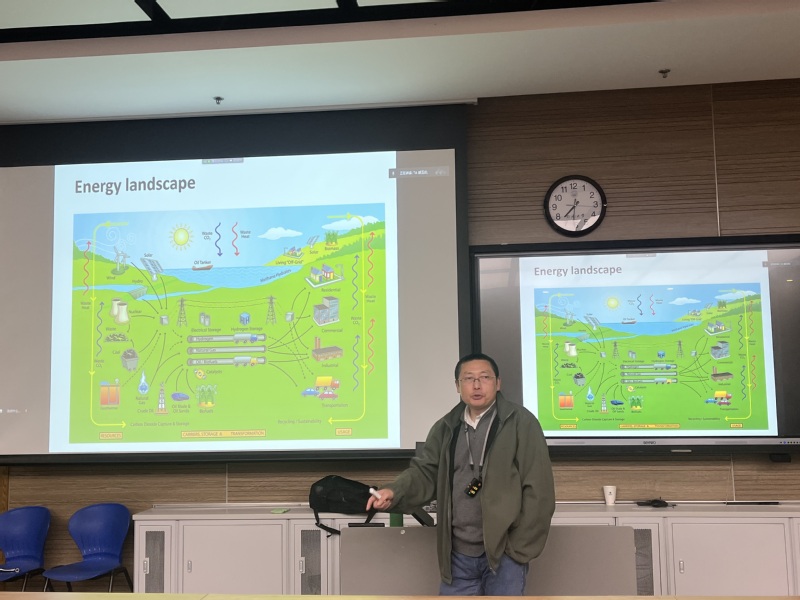Search

On the evening of 9 March 2023, the English lecture series Sustainable Development and the Future continued at Tongji University's Siping Campus. For tonight's session, we are honoured to have Professor Hongting Pu, Director of the Department of Polymer Materials and Institute of Functional Polymer Materials, School of Materials, Tongji University, presenting a keynote lecture on new energy and energy materials.

Figure 1: Professor Hongting Pu is introducing the history of the evolution of energy and materials to the students
Just as learning to use fire and tools distinguishes human beings from animals, fire, which marks energy, and tools, which mark the use of materials, were closely linked at the beginning of human civilization's development. Energy and materials are both the material basis of human existence and the material pillars of the intellectual and spiritual development of human society. They fundamentally determine the historical trajectory of the progress of human civilisation, and a history of the development of human civilisation will eventually be deeply marked by the historical trajectory of human use of energy and materials.

Figure 2: Professor Hongting Pu is explaining the working principle of lithium-ion batteries
Lithium-ion batteries use carbon material as the negative electrode and a compound containing lithium as the positive electrode; there is no lithium metal present, only lithium ions. Lithium ion battery is the general term for a battery with lithium ions embedded in a compound as the positive material. The charging and discharging process of lithium ion batteries is the embedding and de-embedding process of lithium ions. The embedding and de-embedding of lithium ions is accompanied by the embedding and de-embedding of electron equivalents of lithium ions (customarily expressed as embedding or de-embedding for the positive electrode and insertion or de-insertion for the negative electrode). During the charging and discharging process, the lithium ions are embedded/de-embedded and inserted/de-inserted back and forth between the positive and negative electrodes in what is imaginatively referred to as a rocking chair battery.

Figure 3: Professor Hongting Pu is explaining the energy landscape
In terms of the world's energy development trends, the development and utilisation of new and renewable energy sources has attracted attention. Among the various new and renewable energy sources, hydropower, nuclear power, solar energy, wind energy, geothermal energy, ocean energy, biomass and other new and renewable energy sources are the most rapidly developing and researching. China should learn from the technology and experience of developed countries, vigorously promote various forms of power generation such as water, wind, solar and nuclear energy, actively use biomass energy, and make it an important part of its energy security strategy to accelerate its development and gradually reduce its over-dependence on petrochemical energy - oil and coal. It can be expected that new and renewable energy will become one of the fastest growing new industries in China in the next two to three decades. In the face of the current situation of new and renewable energy development, it is imperative for the Chinese government to establish a complete roadmap for the development of new and renewable energy technologies, to integrate existing industrial resources as soon as possible, to rationalise existing resources, the supporting policy system and the energy investment pattern for the next decade or so, to create a highly efficient and relaxed environment for the development of new and renewable energy, and to support the sustainable development and effective use of energy with China's sustainable economic and social development. (Photo/text: Liu Yongxiang)



